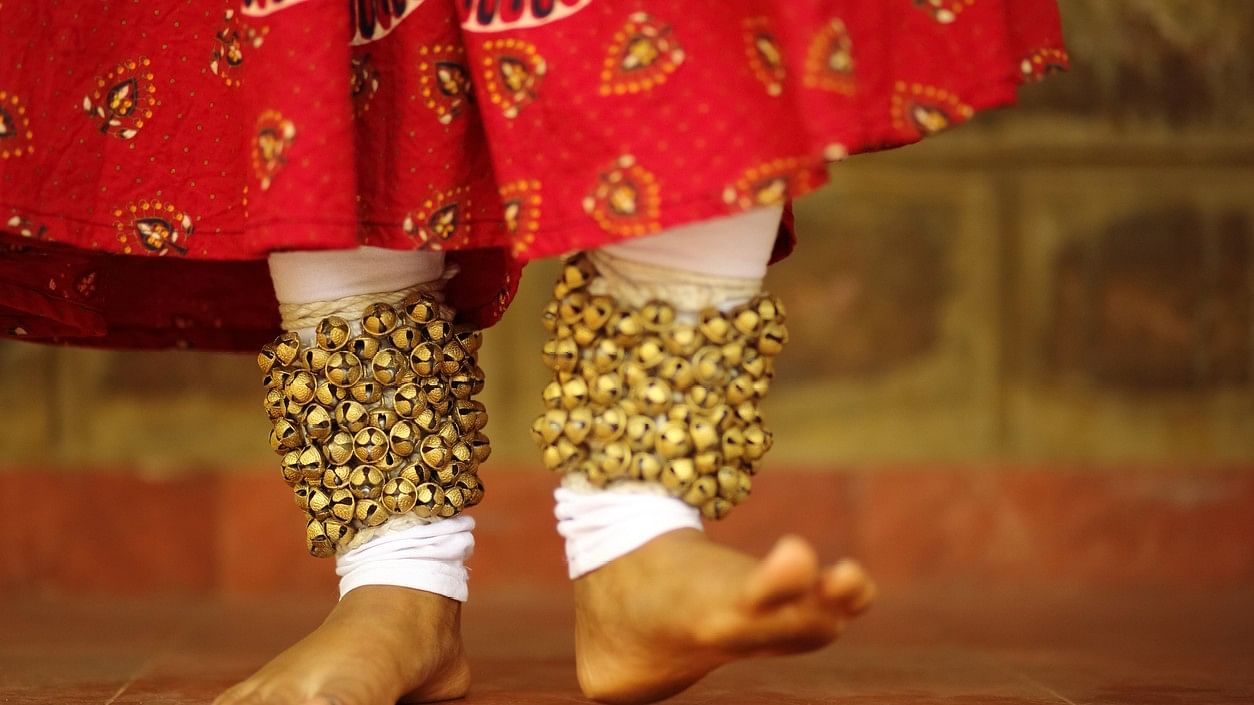
Representative image.
Credit: iStock Photo
Who in all of creation has power enough to call upon God; commanding him to hasten and appear in front of oneself, other than a saint who has surpassed the mundane existence of this world? Thanjavur Balasaraswati radiated this kind of rare, divine luminosity.
Balasaraswati was awarded the Sangeet Natak Akademi award in 1955 and the Padma Vibhushan in 1977, making her the first female dancer in India to be decorated with the second highest civilian award. The famed Madras Music Academy bestowed her with the coveted award of ‘Sangeetha Kalanidhi’, which was typically reserved only for musicians. She went on to become the only dancer ever to hold this honour. As an artist as well as a guru, she captured the spotlight
of the international dance scene. She was deemed an equal of dancers such as Margot Fonteyn, Galina Ulanova and even Martha Graham. But at heart Balasaraswati remained ‘little bird’ (as her friends addressed her), craving to relive her lost childhood.
Thanjavur Balasaraswati.
Image courtesy Jnana Gangothri Vol 5
In South India, Bharatanatyam was previously known by different names, such as Sadir Attam in Tamil Nadu. It was primarily performed in salons and courts, before it was popularised and deemed suitable for stage. Classical Indian dance styles have had a lengthy and turbulent journey. The chronicled heritage of this dance practice can be traced back to more than 1,000 years. The sheer perseverance of traditional performance practitioner families in temple-driven economies was such that the style survived millennia of upheaval. Quite a few classical artistes eventually came to be known as devadasis. They were known to have an intrinsically matrilineal family structure that continued to represent this art form.
Veenai Dhanammal (1867−1938) became one of those artistes whose heritage in the field of entertainers can be directly traced back to over 200 years ago. Thanjavur Balasaraswati was born in 1918 and was Veenai Dhanammal’s granddaughter. As Balasaraswati was born into a family steeped in performing arts, not learning and not absorbing these age-old traditions was unimaginable. In fact, Balasaraswati’s grandmother ran her house with an iron fist and no one was allowed to while away time. Even the children of the family were expected to devote and dedicate themselves to the constant practice of their art. This tradition was followed so strictly that if Balasaraswati was playing on the streets she would be reprimanded and called upstairs to practice. There is an intriguing anecdote related to this. It was believed that even when Veenai Dhanammal had gone blind owing to her age, she could still sense if the kids were playing or practising just by hearing and figuring out which part of the house they were in. Not just this, if one tried to lie down or stretch one’s legs she would know and the kids would be reprimanded.
One wonders whether it was this strict adherence to carrying on a rich legacy that robbed Balasaraswati of her childhood. Even as an adult, she was deeply in love with dolls. Any part of the world she travelled to, she would buy a doll from there. She might have been absorbing her family’s art heritage through observation, but as Balasaraswati recalled in one of her interviews, she considered a madman to be her first guru. It so happened that when she was just a toddler, a beggar, who was almost a madman, used to visit their house begging for alms. He would, in all his craze, utter random dance phrases and Balasaraswati would be highly amused and dance along with the madman. It was later in life that she ruminated how that beggar could have been a divine ascetic who introduced her to dance and gave her his blessing to live an enchanted life of art. How else, she wondered, would he know that he had to sing and dance just when he came to
their house despite no one in Balasaraswati’s family being a dancer at that time.
All of Balasaraswati’s family was into music. Her grandmother; mother, Jayammal (who later accompanied her in dancing); her brothers, T Ranganathan and T Viswanathan, were all engrossed in the creation, rendition and teaching of music.
Balasaraswati was born at a time when popular societal norms were moving against entertainers and more so against dancers. In fact, her mother was worried that she might be ridiculed if she learned dance. Although Balasaraswati’s ancestors did perform Sadir Attam, they never did so for the public. Her family danced only for the temples of their patron Mudaliar family.
Despite strong family resistance, even from Veenai Dhanammal, Balasaraswati’s mother decided to train her in dance. She went ahead and found a young nattuvanar, the now revered, Kandappa Pillai. However, even before training
with Guru Kandappa Pillai, Balasaraswati’s young mind was captivated by the famed dancer, Mylapore Gauri Ammal, and all the craze of devadasi culture in those heady days that was slowly fading away.
Balasaraswati went on to admit that more than the revivalists, Mylapore Gauri Ammal should have been lauded for the preservation of Bharatanatyam. She was so fascinated by Gauri Ammal that whenever she visited her backstage after a concert, she would try on Ammal’s anklets and dream of herself in a mythical and mystical (and more than anything—divine) world full of Gods and demons.
(Excerpted with permission from Courting Hindustan, published by Rupa Publications.)